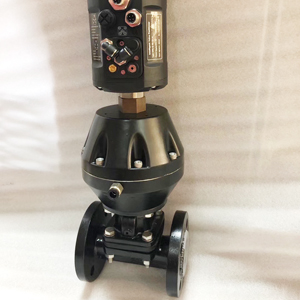Fluorine-lined diaphragm valves play a critical role in industries requiring reliable flow control under demanding conditions. The material used in these valves is crucial, influencing performance, durability, and compatibility. PTFE and PFA, two leading fluoropolymer options, offer distinct benefits that impact their suitability across various applications. From specialized systems like sanitary diaphragm valves in pharmaceutical processing to pneumatic diaphragm valve setups and the uniquely designed 3 way diaphragm valve, understanding material differences is key. This article explores how PTFE and PFA stack up, helping you make informed decisions for your lined diaphragm valves.
Introduction Lined Diaphragm Valves
Lined diaphragm valves are vital in managing corrosive and high-purity processes, offering reliability and precision across industries. Leading diaphragm valve manufacturers emphasize the critical role of material choices, as they directly affect performance and longevity. Whether it’s an air actuated diaphragm valve in chemical processing or a diaphragm valve pneumatic actuator in automated systems, selecting the right material—such as PTFE or PFA—ensures compatibility, durability, and efficiency. This article examines these fluoropolymers, outlining their key differences to guide optimal material selection.
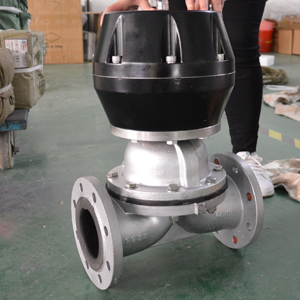
Understanding the Basics of PTFE and PFA in Diaphragm Valves
What are PTFE and PFA? A quick technical overview of their composition and properties.
PTFE (polytetrafluoroethylene) and PFA (perfluoroalkoxy) are high-performance fluoropolymers widely used in diaphragm valves due to their exceptional chemical resistance and thermal stability. PTFE, known for its low friction and non-stick properties, is ideal for handling highly corrosive substances. PFA, a copolymer, shares similar resistance but offers better melt-processability, enabling more complex shapes and designs. These differences make PTFE a preferred choice for durability in static applications, while PFA’s flexibility suits dynamic, high-precision systems, enhancing their relevance in diaphragm valve operations.
Why these materials are essential for fluorine-lined diaphragm valve applications.
PTFE and PFA are indispensable in fluorine-lined diaphragm valve applications due to their unmatched chemical resistance and ability to perform in harsh environments. PTFE’s durability and low permeability make it ideal for managing aggressive or corrosive substances, while PFA’s flexibility and superior thermal stability ensure reliable operation in dynamic systems. These properties safeguard against wear, contamination, and breakdown, making both materials critical to ensuring the longevity and efficiency of fluorine-lined diaphragm valves across demanding industries.
Key industries that rely on fluoropolymer-lined valves for their processes.
Fluoropolymer-lined valves, including those made with PTFE and PFA, are vital in industries like chemical processing, pharmaceuticals, and food and beverage. These sectors depend on the valves’ exceptional chemical resistance and ability to withstand extreme temperatures and pressures. In chemical processing, they ensure safe handling of aggressive substances. Pharmaceutical applications benefit from the non-reactive and sanitary properties, maintaining product purity. Similarly, in food and beverage operations, these valves prevent contamination while meeting strict regulatory standards, making them indispensable across diverse, high-demand environments.
How PTFE Compares to PFA in Sanitary Diaphragm Valves
Differences in chemical resistance and thermal stability between PTFE and PFA.
PTFE and PFA both excel in chemical resistance and thermal stability, but their strengths vary, influencing their suitability for sanitary diaphragm valves. PTFE offers superior resistance to harsh acids and is highly durable under static conditions. Its low permeability also guards against chemical diffusion, making it ideal for prolonged exposure to aggressive chemicals. PFA, while also resistant, provides enhanced thermal stability and melt-processability, which allows for intricate designs and adaptability in dynamic systems. These differences make PTFE optimal for static applications, while PFA suits environments requiring flexibility and precise performance.
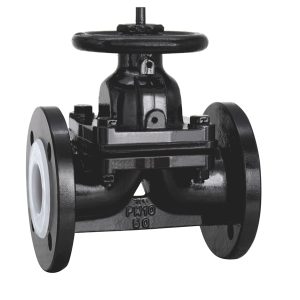
Durability and non-stick properties for sanitary applications, particularly in pharmaceutical and food industries.
PTFE and PFA are prized in sanitary applications for their exceptional durability and non-stick properties, making them essential in pharmaceutical and food industries. Their smooth, non-reactive surfaces prevent material buildup, reducing the risk of contamination and ensuring compliance with strict hygiene standards. PTFE’s robustness allows it to withstand aggressive cleaning procedures, while PFA’s flexibility aids in maintaining performance under dynamic operating conditions. These qualities contribute to reliable, contamination-free processes, aligning with rigorous safety and regulatory demands in these critical sectors.
Advantages of using PTFE over PFA for specific sanitary valve systems.
PTFE offers distinct advantages over PFA in specific sanitary valve systems due to its superior chemical resistance, exceptional durability, and low permeability. These properties make PTFE highly effective in applications where extended exposure to aggressive chemicals and static operating conditions are common. Its robust nature ensures longevity and reliable performance, even in the face of harsh cleaning processes and stringent hygiene demands. This makes PTFE the preferred choice for systems requiring maximum resistance to wear and diffusion, particularly in industries with critical purity and safety standards like pharmaceuticals and high-acidity food processing environments.
Material Considerations in a Pneumatic Diaphragm Valve
How PTFE and PFA contribute to the longevity and maintenance requirements of pneumatic valves.
PTFE and PFA significantly enhance the longevity and reduce the maintenance requirements of pneumatic valves due to their exceptional durability and chemical resistance. Both materials withstand abrasive and corrosive environments, minimizing wear and degradation over time. PTFE’s low permeability ensures long-term reliability by limiting chemical diffusion, while PFA’s thermal stability supports consistent performance under fluctuating conditions. These attributes not only extend the operational lifespan of pneumatic valves but also reduce the frequency and cost of maintenance, ensuring efficient and dependable operation in demanding industrial applications.
Impact of material integrity on pressure resistance and performance in pneumatic systems.
The structural integrity of materials like PTFE and PFA plays a critical role in ensuring reliable pressure resistance and performance in pneumatic systems. Their robust composition allows these materials to withstand high-pressure cycles without deformation or failure, maintaining system stability and safety. PTFE’s low permeability further enhances pressure containment, while PFA’s flexibility accommodates dynamic stresses. Together, these properties ensure consistent performance, reducing the risk of pressure-induced malfunctions and reinforcing the dependability of pneumatic diaphragm valves in demanding industrial environments.
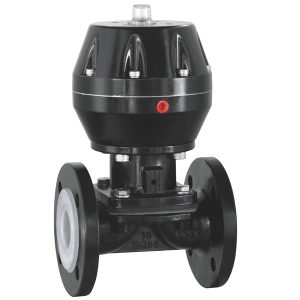
Comparison of cost-efficiency for PTFE vs. PFA in pneumatic diaphragm valve designs.
When comparing cost-efficiency in pneumatic diaphragm valve designs, PTFE generally offers a more budget-friendly option upfront, while PFA tends to have a higher initial material cost due to its enhanced flexibility and thermal properties. However, PTFE’s outstanding chemical resistance and durability often translate into lower long-term maintenance and replacement costs, making it a value-driven choice for static and high-purity applications. PFA, with its adaptability in dynamic systems and resilience under varying conditions, justifies its higher price in specialized environments where precision and thermal stability are priorities. The choice ultimately depends on balancing immediate costs against performance longevity and application-specific demands.
PTFE and PFA for Complex Systems like the 3 Way Diaphragm Valve
Material flexibility and design adaptability in multi-directional flow valves.
PTFE and PFA excel in multi-directional flow valves like 3-way diaphragm designs due to their exceptional flexibility and adaptability. PTFE’s low friction and chemical resistance ensure smooth operation across diverse flow paths, while PFA’s enhanced pliability accommodates intricate geometries and dynamic pressure changes. These material properties enable precise control and efficient performance, making them indispensable in complex systems requiring versatility, reliability, and minimal maintenance across challenging industrial applications.
Evaluating PTFE and PFA under varied operational conditions, including high temperatures and corrosive chemicals.
PTFE and PFA demonstrate exceptional performance under extreme operational conditions, including high temperatures and exposure to corrosive chemicals. PTFE’s robust thermal stability and unmatched chemical resistance make it ideal for applications requiring maximum durability in harsh environments. Similarly, PFA offers superior chemical compatibility while maintaining greater flexibility under thermal stress, making it well-suited for dynamic systems. Together, these materials provide reliable solutions for demanding applications, ensuring consistent functionality and extended component lifespan in even the most challenging industrial settings.
Case examples of 3-way diaphragm valve applications utilizing PTFE or PFA linings.
3-way diaphragm valves lined with PTFE or PFA are widely employed in industries such as chemical processing, pharmaceuticals, and food and beverage production. For example, in chemical plants, PTFE linings effectively handle abrasive and highly corrosive media, ensuring reliable performance under aggressive conditions. Similarly, PFA’s thermal stability and flexibility make it indispensable in pharmaceutical systems, where maintaining purity and precise temperature control are critical. These linings enhance the valve’s capability to manage complex flow paths while delivering long-lasting durability and maintaining stringent safety and quality standards in their respective applications.
The Role of Material Selection for Diaphragm Valve Manufacturers
How leading manufacturers approach material selection for fluorine-lined components.
Leading manufacturers prioritize a rigorous material selection process for fluorine-lined components to ensure optimal performance and reliability. Key considerations include chemical compatibility with the intended media, the ability to withstand demanding operational conditions like extreme temperatures or pressures, and overall cost-efficiency. By carefully balancing these factors, manufacturers design components that deliver consistent functionality, resist degradation over time, and meet application-specific demands, ensuring safety, efficiency, and long-term value across diverse industrial systems.
Quality control and certifications required for PTFE and PFA components in the manufacturing process.
Stringent quality control and adherence to industry certifications are critical in the manufacturing of PTFE and PFA components. These materials undergo rigorous testing to ensure compliance with standards such as ISO 9001 and FDA regulations, depending on the application. This ensures reliability under extreme conditions, including high temperatures and corrosive environments. By enforcing thorough inspections and certification processes, manufacturers guarantee that components meet safety, performance, and regulatory requirements, providing consistent quality and trust across demanding industries.
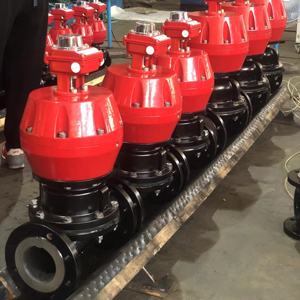
Benefits of partnering with trusted diaphragm valve manufacturers for industry-specific needs.
Partnering with trusted diaphragm valve manufacturers ensures access to tailored solutions designed to meet specific industry demands. Reputable manufacturers deliver valves built with precision-engineered, high-quality materials like PTFE and PFA, ensuring chemical compatibility and durability under extreme conditions. Their expertise guarantees compliance with stringent industry standards, enhancing operational efficiency, minimizing downtime, and providing long-term reliability.
PTFE vs. PFA in Air Actuated Diaphragm Valves
Examination of material performance in systems reliant on air actuation mechanisms.
PTFE and PFA excel in air-actuated diaphragm valves, offering superior performance in demanding systems. PTFE’s exceptional chemical resistance and thermal stability ensure durability in applications involving aggressive chemicals and high temperatures. PFA, with its enhanced flexibility and strength, is ideal for complex actuation mechanisms requiring consistent sealing under pressure. Both materials optimize operational efficiency, reducing wear and tear while delivering reliable, long-lasting performance in systems where precision and resistance to degradation are critical.
Compatibility of PTFE and PFA with air-actuated environments, including high-performance industries like chemical processing.
PTFE and PFA demonstrate exceptional compatibility with air-actuated environments, making them indispensable in high-performance industries like chemical processing. PTFE’s unmatched resistance to corrosive chemicals and extreme temperatures ensures long-lasting reliability, while PFA’s superior mechanical strength supports high-pressure applications with consistent sealing performance. These attributes enable both materials to handle aggressive conditions effectively, providing durable, efficient, and safe solutions for demanding industrial operations.
Design benefits and technical considerations when specifying PTFE or PFA for air actuated diaphragm valves.
Choosing between PTFE and PFA for air-actuated diaphragm valves involves careful evaluation of their unique design benefits and technical properties. PTFE offers exceptional chemical resistance and thermal stability, making it ideal for applications involving aggressive chemicals and high temperatures. PFA provides enhanced flexibility and mechanical strength, ensuring reliable performance in systems with high pressure or complex actuator mechanisms. Engineers must weigh factors like operational conditions, required durability, and system compatibility to specify the most efficient material for their application needs.
Material Performance in Diaphragm Valve Pneumatic Actuator Applications
PTFE and PFA are highly effective materials for diaphragm valve pneumatic actuator applications due to their exceptional performance characteristics. PTFE excels in environments with aggressive chemicals and high temperatures, providing unparalleled chemical resistance and durability. PFA, on the other hand, offers superior flexibility and mechanical strength, ensuring reliable operation under high-pressure conditions and intricate actuator designs. Both materials maintain efficiency and longevity, making them vital choices for demanding industrial applications where precision and resilience are crucial.
Applications and Best Practices for Material Selection
Selecting between PTFE and PFA for fluorine-lined diaphragm valves requires a clear understanding of application-specific demands. PTFE is the preferred choice in environments with aggressive chemicals and extreme temperatures, offering unmatched chemical resistance and thermal stability. PFA, with its superior mechanical strength and flexibility, excels in high-pressure systems or applications requiring intricate actuator designs. Best practices for material selection include thorough assessment of chemical compatibility, operational temperatures, and system pressures to ensure optimal performance and longevity in industrial processes.

FAQ Lined Diaphragm Valves
Q1: What makes PTFE and PFA ideal materials for lined diaphragm valves in industrial applications?
A1: Both PTFE and PFA provide exceptional chemical resistance and durability, making them indispensable for lined diaphragm valves used in industries like chemical processing and pharmaceuticals. PTFE offers unmatched thermal stability, making it ideal for high-temperature environments, while PFA’s flexibility and mechanical strength ensure reliable performance in dynamic systems, such as those involving pneumatic diaphragm valves. Their ability to withstand aggressive substances ensures longevity and efficiency, even under demanding conditions.
Q2: Are PTFE and PFA suitable for sanitary diaphragm valves, and how do they differ?
A2: Yes, both materials are highly suitable for sanitary diaphragm valves due to their non-reactive surfaces and ability to maintain purity in sensitive processes. PTFE is often chosen for its superior chemical resistance and thermal endurance, making it excellent for processes with harsh cleaning protocols. On the other hand, PFA provides greater flexibility, which is advantageous in systems like 3 way diaphragm valves, where complex movements are required, and consistent sealing is critical.
Q3: What factors should engineers consider when specifying PTFE or PFA for pneumatic diaphragm valves?
A3: Engineers should evaluate the chemical compatibility, temperature extremes, and pressure requirements of their systems when choosing between PTFE and PFA for pneumatic diaphragm valves. PTFE excels in environments exposed to aggressive chemicals and high heat, while PFA’s enhanced mechanical strength and flexibility allow it to perform optimally in high-pressure scenarios or in configurations like 3 way diaphragm valves. Proper material selection ensures reliable operation and extends the valve’s service life in industrial or sanitary applications.
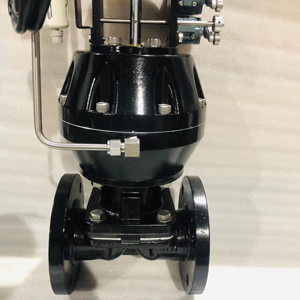
Conclusion Lined Diaphragm Valves
When it comes to fluorine-lined diaphragm valves, PTFE and PFA stand out as premier materials, each offering unique benefits that cater to specific industrial demands. PTFE excels in chemical resistance and thermal stability, making it ideal for systems exposed to extreme conditions, while PFA’s mechanical strength and flexibility make it invaluable for applications requiring dynamic performance. Diaphragm valve manufacturers must carefully assess operational factors like chemical compatibility, temperature, and pressure to make informed material choices. Whether it’s an air actuated diaphragm valve in a high-performance setting or a diaphragm valve pneumatic actuator in a complex system, selecting the appropriate material ensures durability, efficiency, and reliable performance across critical industries.

